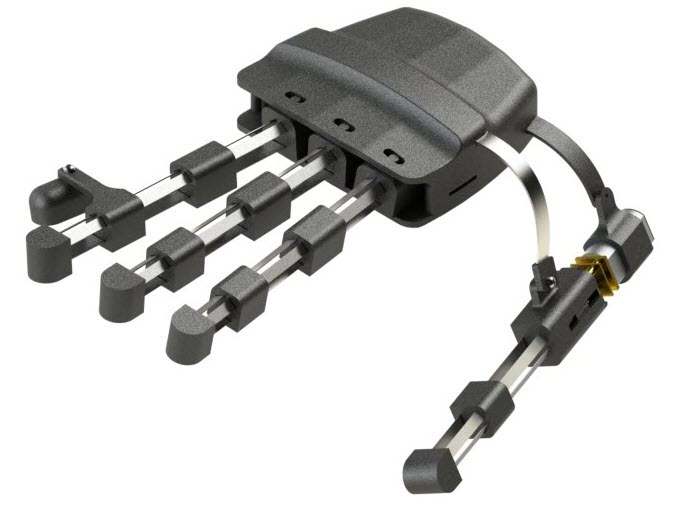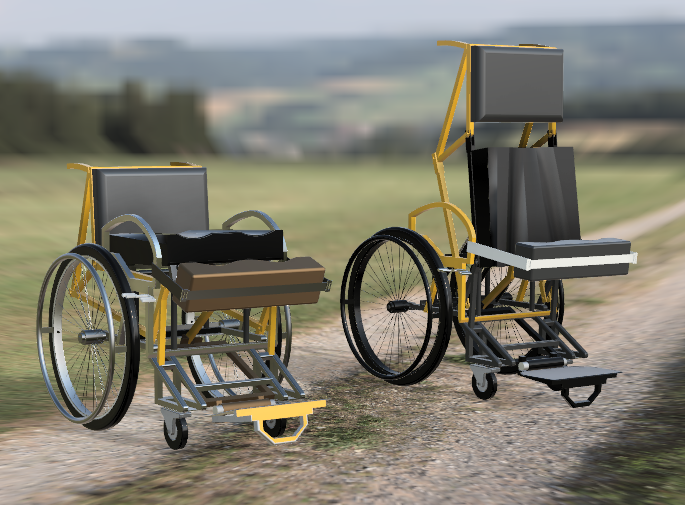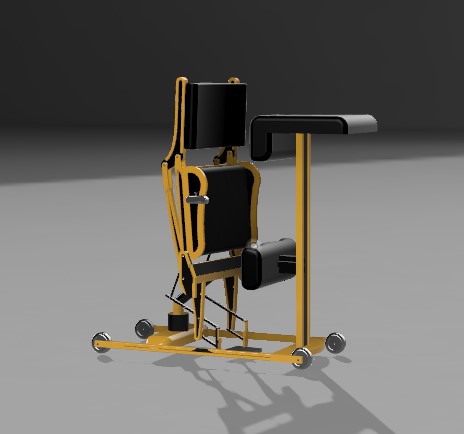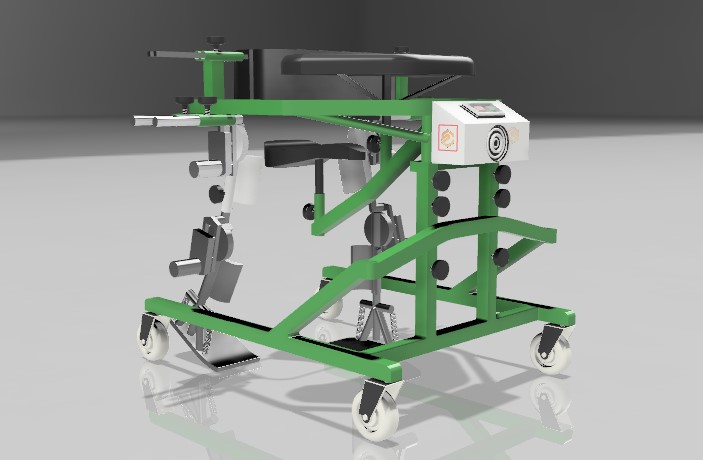Welcome to Open Source Medical Technology Lab!
Introduction
OpenMedTech Lab is an international collaborative community dedicated to advancing medical technology through innovative open source solutions. Convenor of the OpenMedTech Lab is Dr Monzurul Alam. We bring together developers, engineers, healthcare professionals, enthusiasts, everyone to create impactful projects for the community. Anyone from anywhere is warmly welcome to contribute to our projects!
Projects
- OpenXamp: Open source biosignal amplifier
- OpenXstim: Open source electrical stimulator
- OpenXhand: Open source hand exokeleton
- OpenXwheel: Open source standing wheelchair
- OpenXstand: Open source standing frame
- OpenXwalk: Open source exoskeleton walker
OpenXamp
OpenXamp is a cost-effective, open-source bio-signal amplifier designed to filter and amplify physiological signals for laboratory and DIY experiments. It features a high common-mode-rejection-ratio (CMRR) pre-amplifier for differential signal detection, with an option to short the inverting input for single-ended use. The device includes band-pass filtering and adjustable amplification to tailor the signal strength. Users can either utilize the amplified analog signal directly or convert it to digital via an integrated analog-to-digital converter (ADC) and microcontroller (MCU). The digitized data can then be transmitted to a computer via USB, leveraging the MCU's built-in interfaces for streamlined data handling and analysis. Commonly available electronic components are being used in the stimulator so that it can be developed in places where availability is an issue. Total components cost is only around $25!

Please visit the project GitHub repository to learn more.
OpenXstim
Transcutaneous spinal cord stimulation (tSES), a non-invasive, spinal cord neuromodulation method holds tremendous promise and hope for the people with paralysis resultant of spinal cord injury (SCI) and other neurological conditions. Yet, there are not many options of such stimulation devices compared to other successful electrical stimulators, especially for most people with neurological injuries in the developing world. Hence, we have developed an open source programmable transcutaneous electrical stimulator (TES) to facilitate researchers to develop successful stimulation therapy for people with neurological conditions. Commonly available electronic components are being used in the stimulator so that it can be developed in places where availability is an issue. Total components cost is around $200!

Please visit the project GitHub repository to learn more.
OpenXhand
Millions of individuals suffer from upper extremity paralysis caused by neurological disorders including stroke, traumatic brain injury, or spinal cord injury. Robotic hand exoskeletons can substitute the missing motor control and help restore the functions in daily operations. However, most of the hand exoskeletons are bulky, stationary, and cumbersome to use. Using 3D printing technology, we have developed a motorized, lightweight, fully wearable rehabilitative hand exoskeleton capable of producing various grasps needed for the execution of daily tasks. The exoskeleton can produce fingertip force up to 8 N and can cover 91.5° of range of motion in just 3 s ans weights just 228 g. We tested the exoskeleton on two individuals with severe dextarity impairments. The results strongly support the functionality restoration and usability of the exokeleton in performing daily activities. Total components cost prototype one exoskeleton is around $100!

Please visit the project GitHub repository to learn more.
OpenXwheel
Regular standing using assistive device after paralysing spinal cord injury (SCI) has numerous benefits including improved cardiovascular health, increased muscle mass and bone strength, and avoiding life threatening conditions such as pressure ulcer. It also significantly improves self-esteem and psychological health. Current standing wheelchairs, however, are too expensive for most SCI individuals. Hence, we have developed a low-cost open-source standing wheelchair to improve the life of people with paraplegia in low- and middle-income settings. Hence, we have developed an open source standing wheelchair to improve the life of people with paralysis in low- and middle-income (LMI) settings. Careful considerations were given to simplify the design to avoid complex manufacturing process. It costs only around $166 in a LMI country to develop this standing wheelchair!

Please visit the project GitHub repository to learn more.
OpenXstand
Did you know that people in developing countries have up to 20 times shorter life expectancy after sustaining neurological injuries, such as spinal cord injuries? This is largely due to preventable conditions like pressure ulcers. Regular standing provides a viable remedy for these secondary issues. The goal of this project was to create an actuator-controlled electric standing frame that is both affordable and effective in reducing pressure ulcer risks while improving the overall health of these individuals. Our active stander offers a safe, comfortable way to stand, enhancing bone density, muscular mass, and cardiovascular health through innovative design and open-source collaboration.

Please visit the project GitHub repository to learn more.
OpenXwalk
Children facing movement challenges due to conditions like cerebral palsy often encounter difficulties with walking and may experience feelings of exclusion. Exoskeleton walkers offer a potential solution by providing support for walking and aiding muscle movements. These devices are customizable for each child, potentially contributing to both physical improvement and cognitive development. Beyond the physical benefits, exoskeletons can enhance social interactions, fostering a sense of inclusion and happiness. Early intervention with these walkers may lead to improved long-term outcomes. However, the availability of such walkers is limited, and their cost is high. Hence, we've developed an open-source exoskeleton walker, aiming to make this technology accessible to children worldwide, promoting their well-being and ensuring they can enjoy life like everyone else!

Please visit the project GitHub repository to learn more.
Contact
Want to get involved or have any questions? Please email us!